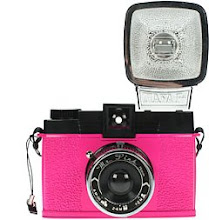
In recognition of their groundbreaking contributions to architecture, furniture design, manufacturing and photographic arts, designers Charles and Ray Eames will be honored this summer with a pane of 16 stamps designed by Derry Noyes of Washington, DC. Perhaps best known for their furniture, the Eameses were husband and wife as well as design partners. Their extraordinary body of creative work — which reflected the nation’s youthful and inventive outlook after World War II — also included architecture, films and exhibits. Without abandoning tradition, Charles and Ray Eames used new materials and technology to create high-quality products that addressed everyday problems and made modern design available to the American public.

Charles and Ray achieved their monumental success by approaching each project the same way: Does it interest and intrigue us? Can we make it better? Will we have "serious fun" doing it?
They loved their work, which was a combination of art and science, design and architecture, process and product, style and function. "The details are not details," said Charles. "They make the product."

A problem-solver who encouraged experimentation among his staff, Charles once said his dream was "to have people working on useless projects. These have the germ of new concepts."
Their own concepts evolved over time, not overnight. As Charles noted about the development of the Molded Plywood Chairs, "Yes, it was a flash of inspiration," he said, "a kind of 30-year flash."

With these two, one thing always seemed to lead to another. In the early 1940s, when Charles Eames was working on MGM set designs, he would return to the small apartment where he and Ray were experimenting with wood-molding techniques that would have profound effects on the design world. Their revolutionary work in molded plywood led to their breakthrough work in molded fiberglass seating. These discoveries led to a commission from the U.S. Navy in 1942 to develop plywood splints, stretchers and glider shells molded under heat and pressure.

After World War II, they adapted the technology to create inexpensive, high-quality chairs that could be mass-produced. The process eliminated the extraneous wood needed to connect the seat with the back, which reduced the weight and visual profile of the chair and established a basis for modern furniture design.
A magazine contest led to their highly innovative "Case Study" house. Their love of photography led to film making, including a huge seven-screen presentation at the Moscow World's Fair in 1959, in a dome designed by their friend and colleague, Buckminster Fuller. Graphic design led to showroom design, toy collecting to toy inventing. And a wooden plank contraption, rigged up by their friend, director Billy Wilder for taking naps, led to their acclaimed chaise design.

A design critic once said that this extraordinary couple "just wanted to make the world a better place." That they did. They also made it a lot more interesting.
:design museum; usps.



No comments:
Post a Comment